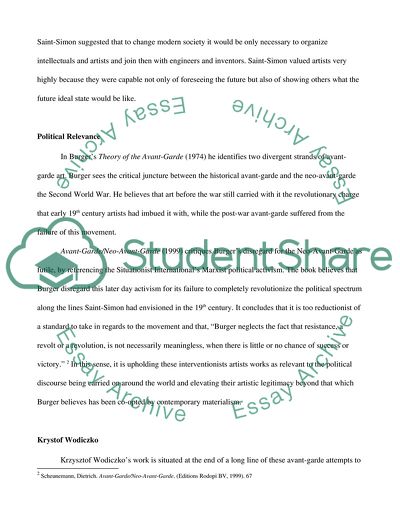Cite this document
(Interventionist Artists Essay Example | Topics and Well Written Essays - 2500 words, n.d.)
Interventionist Artists Essay Example | Topics and Well Written Essays - 2500 words. Retrieved from https://studentshare.org/visual-arts-film-studies/1733636-critically-examine-the-work-of-four-interventionists-artists-or-groupsencompassing-ad-busters-with-reference-to-their-mc-donalds-campaign
Interventionist Artists Essay Example | Topics and Well Written Essays - 2500 words. Retrieved from https://studentshare.org/visual-arts-film-studies/1733636-critically-examine-the-work-of-four-interventionists-artists-or-groupsencompassing-ad-busters-with-reference-to-their-mc-donalds-campaign
(Interventionist Artists Essay Example | Topics and Well Written Essays - 2500 Words)
Interventionist Artists Essay Example | Topics and Well Written Essays - 2500 Words. https://studentshare.org/visual-arts-film-studies/1733636-critically-examine-the-work-of-four-interventionists-artists-or-groupsencompassing-ad-busters-with-reference-to-their-mc-donalds-campaign.
Interventionist Artists Essay Example | Topics and Well Written Essays - 2500 Words. https://studentshare.org/visual-arts-film-studies/1733636-critically-examine-the-work-of-four-interventionists-artists-or-groupsencompassing-ad-busters-with-reference-to-their-mc-donalds-campaign.
“Interventionist Artists Essay Example | Topics and Well Written Essays - 2500 Words”, n.d. https://studentshare.org/visual-arts-film-studies/1733636-critically-examine-the-work-of-four-interventionists-artists-or-groupsencompassing-ad-busters-with-reference-to-their-mc-donalds-campaign.


